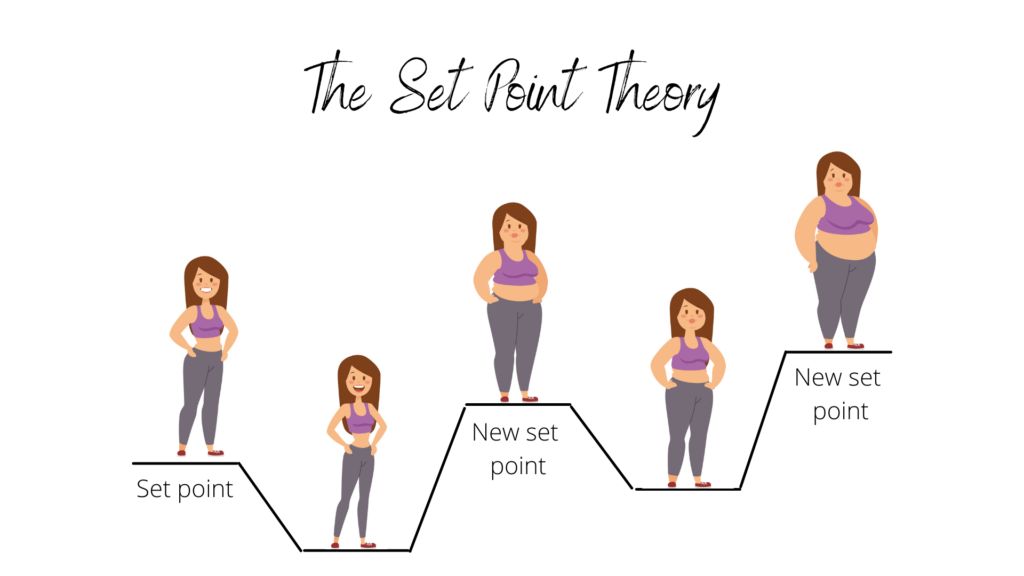
Are you sick and tired of rebound weight gain?
Honestly, I don’t blame you. It truly sucks when you’ve put in blood, sweat and tears to lose weight, only to find yourself gaining back every last gram until you are back to square one. What’s worse, is that 9/10 times we gain back a little more than we lost in the first place!
My new clients often tell me that they are now at their heaviest, after years of dieting / restricting. They feel like they have failed at their health, like there simply is no hope for them. Can you relate to this?
Well, let me tell you a little secret my friend. You did not fail – diet culture has failed you (as it has done for countless other women). You see, dieting / restricting food does work temporarily – but it’s never a long term solution. 95% of those who lose weight on a diet end up gaining the weight back in less than 5 years…and most of those people gain back more than what they lost in the first place.
Why is it so easy to gain back everything that you've lost (plus some) after a diet?
Well, because dieting sucks. It messes up your relationship with food, resulting in cravings, food obsessions, emotional eating and bingeing (to name a few). The more we diet, the more “out of control” we feel around food, and the deeper we get stuck into the restrict-binge cycle.
Plus, according to the Set Point Theory, dieting raises your set point weight. This is your body’s “natural” weight – determined by factors such as genetics, age, gender, etc. It’s the weight that your body “wants” to be at, and that it fights to maintain.
The more you diet, the more you damage your metabolism. After each subsequent diet, your set point weight increases slightly (see the figure below)…

…which elegantly explains why rebound weight gain happens in the blink of an eye. Your body fights to get you to your new set point weight by increasing your desire to binge on high energy foods.
Essentially, this is a survival mechanism. Your body does not know the difference between a diet and a famine, and it’s doing everything it can to protect you against a future famine.
Thankfully, you can break this cycle and find your healthiest, set point weight.
When you reach your set point, you will feel your best (both mentally and physically). Plus you will be able to maintain this weight WITHOUT needing to follow restrictive food rules, detoxes, or crazy diets.
If you’ve been trapped in the diet-binge cycle, you may currently be above your set point (meaning that you will lose weight to get to your set point). If you’ve been restricting severely (without bingeing), you may currently be below your set point (meaning you would need to gain some weight to be healthy). What’s going to happen to your weight will depend on where you are coming from. But what matters most is that the yo-yo effect stops, so that you can work on accepting your “now” body and get on with your life.
P.S. If you feel trapped in the restrict-binge cycle, and you are ready to break free, you can book a complimentary Game-Plan call here. I’ll help you to come up with a strategy that will work for YOU – for free.
The 4 steps that you need to take to find your set point weight
STEP 1: Ditch those restrictive food & dieting rules.
I’m talking about cutting out carbs, eating only in a specific window, having lists of foods to avoid, etc. These rules keep you from listening to your body, and trigger black-and-white thinking: “I’ve already cheated, might as well go all in and restart tomorrow.” Plus they keep you stuck in a food scarcity mindset, which triggers overeating.
I know it’s scary to let go. Maybe you worry that you will be out of control without these rules, that you will eat pizza and chocolate all day. In the Empowered Eating Academy, I help my clients to work through their food rules systematically – one at a time. We start by merely re-framing rules to make them more flexible.
And believe me, it is 100% possible to learn how to TRUST yourself to make good choices, without needing a dozen inflexible food rules. YOU get to choose what, when and how you eat. YOU have the power, and your body has more wisdom to guide you than you may realize.
STEP 2: Take a break from the scale.
I know this sounds counter-intuitive, but here me out. The scale has several serious limitations – including the fact that it does not account for fluid shifts in the body, muscle mass, poop, water weight, etc. It naturally fluctuates from day-to-day, and this can falsely lead you to believe that you have gained / lost weight. When you step on the scale and see that the number is up, you may feel frustrated. This can easily lead you to self-sabotaging behaviours (such as emotional / binge eating).
Plus as long as you keep focusing on your body weight, you are essentially still dieting. The scale will influence your food choices and stop you from learning to self-regulate with food.
As your eating habits normalize, your weight will normalize too. You will feel / see the change – I promise. But jumping on the scale obsessively will only hinder the process.
STEP 3: Learn intuitive eating skills.
Intuitive eating is a non-diet approach that can teach you how to self-regulate with food. In other words, intuitive eating teaches you how to listen to – and respect – your body’s biological cues (hunger, fullness, satisfaction, etc.).
But listening to your body is not just about eating when you are hungry and stopping when you are full. It’s also about eating foods that satisfy you and leave you feeling your best. No matter how delicious a food is, it’s impossible to enjoy it fully if it leaves you feeling sluggish and bloated.
When you learn to listen to the wisdom of your body, your body will naturally gravitate towards it’s set point weight.
Step 4: Build permanent, lasting habits that support your health.
This last step can only happen once you have improved your relationship with food (through the previous 3 steps). That’s because it is virtually impossible to build healthy habits when you are struggling with constant cravings, obsessive food thoughts, and an urge to binge.
When you have a healthy relationship with food and your body, everything else comes easily; eating veggies, exercising, drinking enough water, portion control, etc.
In the Empowered Eating Academy, I help my clients to build a lifestyle that is flexible, fun and sustainable through permanent habit change – focusing on building just one habit at a time.
The end result? An empowered women who naturally eats healthily, exercises AND feels wonderful about herself – WITHOUT needing to diet.
Ready to take bold action to improve your relationship with food?
Book a complimentary Game-Plan call with me, and I’ll help you to come up with a plan that will work for you. This call will also be an opportunity for you to join the Empowered Eating Academy, if you wish (no pressure!).
Looking forward to hearing from you very soon,
Marna (RD, MSc)

